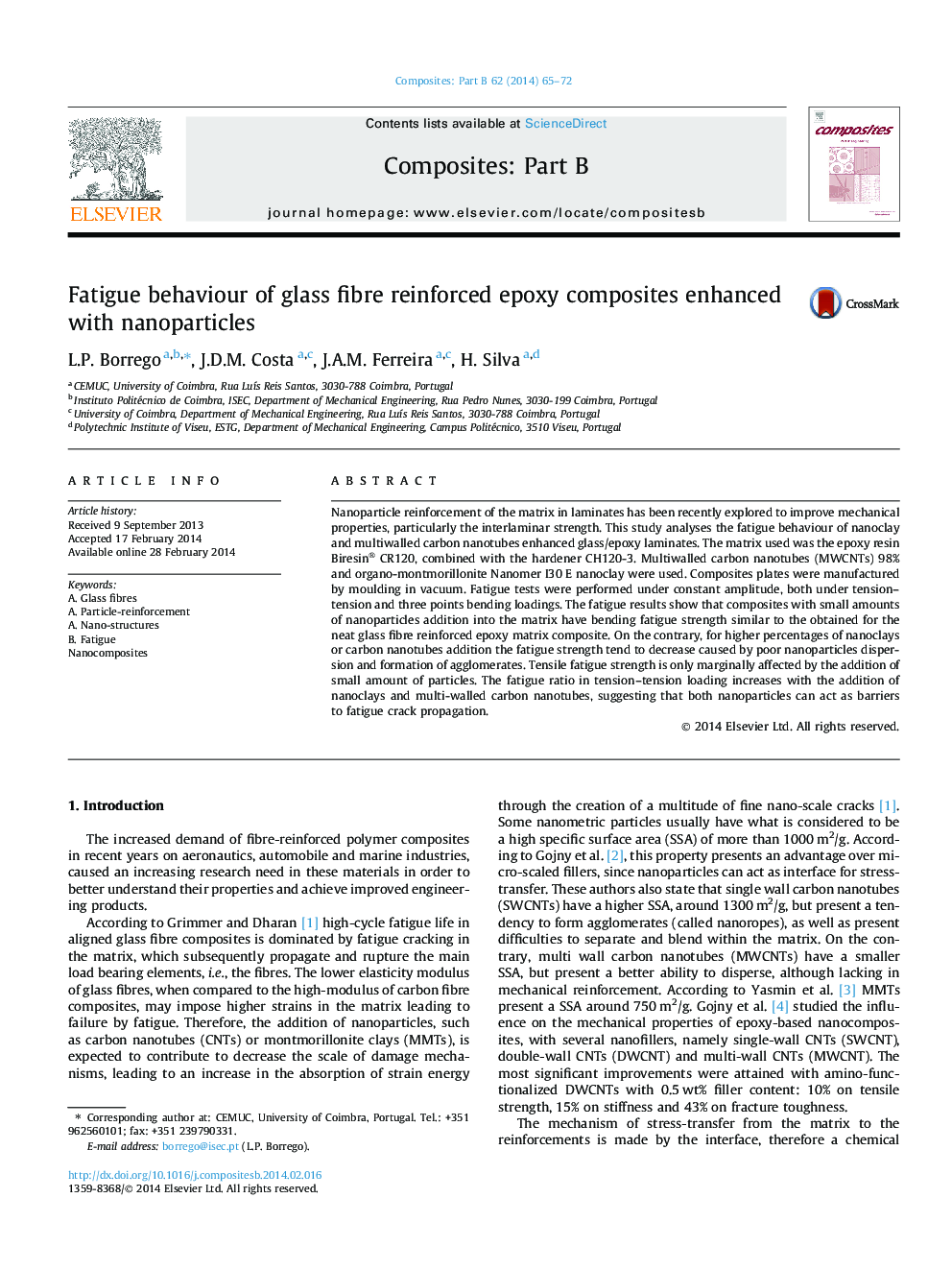| Article ID | Journal | Published Year | Pages | File Type |
|---|---|---|---|---|
| 817665 | Composites Part B: Engineering | 2014 | 8 Pages |
Abstract
Nanoparticle reinforcement of the matrix in laminates has been recently explored to improve mechanical properties, particularly the interlaminar strength. This study analyses the fatigue behaviour of nanoclay and multiwalled carbon nanotubes enhanced glass/epoxy laminates. The matrix used was the epoxy resin Biresin® CR120, combined with the hardener CH120-3. Multiwalled carbon nanotubes (MWCNTs) 98% and organo-montmorillonite Nanomer I30 E nanoclay were used. Composites plates were manufactured by moulding in vacuum. Fatigue tests were performed under constant amplitude, both under tension-tension and three points bending loadings. The fatigue results show that composites with small amounts of nanoparticles addition into the matrix have bending fatigue strength similar to the obtained for the neat glass fibre reinforced epoxy matrix composite. On the contrary, for higher percentages of nanoclays or carbon nanotubes addition the fatigue strength tend to decrease caused by poor nanoparticles dispersion and formation of agglomerates. Tensile fatigue strength is only marginally affected by the addition of small amount of particles. The fatigue ratio in tension-tension loading increases with the addition of nanoclays and multi-walled carbon nanotubes, suggesting that both nanoparticles can act as barriers to fatigue crack propagation.
Related Topics
Physical Sciences and Engineering
Engineering
Engineering (General)
Authors
L.P. Borrego, J.D.M. Costa, J.A.M. Ferreira, H. Silva,
